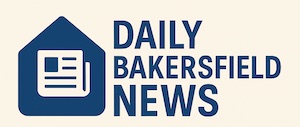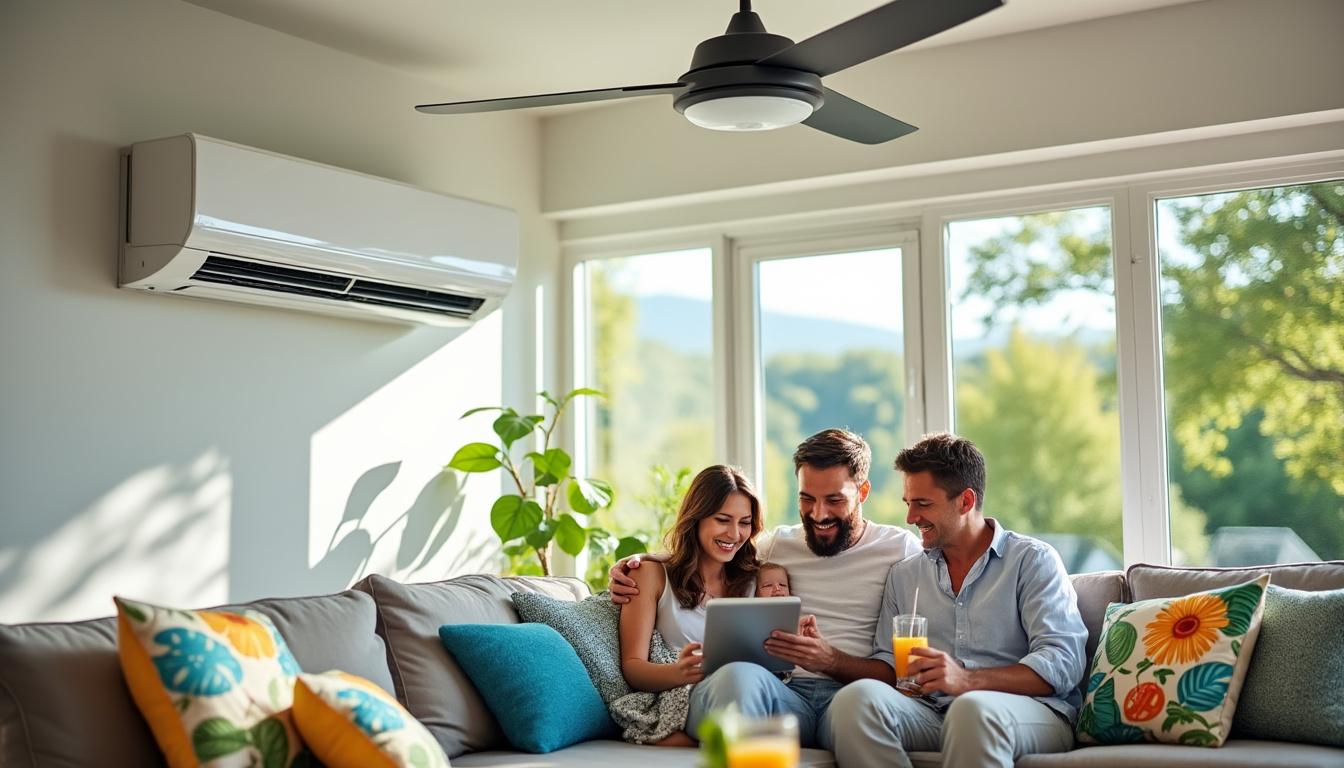With rising summer temperatures, homeowners face the dual challenge of maintaining comfortable indoor environments while managing escalating energy costs. Edison Heating and Cooling offers expert guidance on optimizing home comfort through energy-efficient HVAC solutions and smart practices to beat the heat without overburdening the electric bill. Their insights shed light on sustainable approaches to cooling that not only enhance living standards but also contribute to long-term environmental benefits.
Optimizing HVAC Performance for Enhanced Energy Efficiency and Cooling Comfort
Maximizing the efficiency of air conditioning systems plays a pivotal role in reducing energy consumption and preserving home comfort during the summer months. Edison Heating and Cooling emphasizes the importance of routine maintenance and strategic upgrades tailored for HVAC systems to ensure they operate at peak performance.
Key strategies include:
- Regular Maintenance: Scheduling annual inspections and tune-ups can identify worn components, clean evaporator coils, and replace air filters, preventing costly breakdowns and improving airflow.
- Upgrading Equipment: Transitioning to high-SEER-rated HVAC units helps deliver effective cooling with minimized energy draw. These models use advanced compressor technologies and variable-speed motors to adjust output based on cooling load.
- Smart Thermostat Integration: Installing programmable thermostats enables customized cooling schedules, reducing energy waste during hours when the home is unoccupied.
- Proper Sizing: Selecting the right capacity HVAC system ensures consistent temperature control without inefficient cycling that strains equipment and wastes energy.
For example, an older HVAC unit in a midsize Edison home that operates with a SEER (Seasonal Energy Efficiency Ratio) rating below 10 can consume 20-30% more electricity compared to a modern system exceeding 16 SEER. This difference translates to hundreds of dollars in savings over a summer season.
Implementing these measures dramatically improves energy efficiency of cooling infrastructure, yielding lower utility bills and extending equipment lifespan. This holistic approach also enhances indoor air quality and consistent temperature distribution, elevating overall home comfort.
Importance of Thermal Insulation and Home Sealing in Cooling Efficiency
A well-insulated and sealed home offers substantial advantages in maintaining cooler temperatures while minimizing reliance on air conditioning. Edison Heating and Cooling advises property owners to assess the state of their home’s thermal insulation and address air leaks to preserve cooled air effectively.
Several elements contribute to thermal efficiency:
- Attic and Wall Insulation: Quality insulation materials like spray foam, cellulose, or fiberglass reduce heat transfer through the building envelope, significantly lowering cooling demands.
- Window Treatments: Utilizing energy-efficient windows with low-emissivity coatings and adding external shading elements such as awnings or reflective films block solar heat gain.
- Air Sealing: Sealing gaps around doors, windows, electrical outlets, and ductwork prevents cooled air from escaping and warm air from infiltrating.
- Ventilation Management: Employing attic vents and exhaust fans help expel hot air buildup, alleviating pressure on air conditioning systems.
Studies reveal that homes with insufficient insulation might see an increase of up to 25% in cooling costs during peak summer periods. Applying thermal improvements can slash energy consumption by approximately 15-20%, representing significant financial savings over time.
Homeowners interested in sustainable, long-lasting comfort solutions should explore insulation upgrades at energy-saving summer strategies, which highlight cost-effective tactics for strengthening thermal resistance and airflow control.
| Insulation Type | R-Value Range | Effect on Cooling Load | Estimated Energy Savings (%) |
|---|---|---|---|
| Spray Foam | 6.5–7 per inch | Excellent air sealing and thermal barrier | 18–22 |
| Fiberglass Batts | 3.7–4.3 per inch | Standard insulation, requires additional air sealing | 10–15 |
| Cellulose | 3.2–3.8 per inch | Good coverage, eco-friendly | 12–17 |
Implementing Smart Thermostats for Precise Temperature Control and Energy Savings
The integration of smart thermostats has revolutionized home climate management by enabling adaptive and user-centric control over HVAC operation. Edison Heating and Cooling highlights the technology’s advantages in reducing unnecessary energy consumption while sustaining ideal indoor temperatures.
Smart thermostats offer features including:
- Learning Capacities: Devices analyze occupancy patterns and adjust cooling schedules accordingly, minimizing operation when residents are away.
- Remote Access: Users can monitor and control their HVAC systems via apps, allowing temperature adjustments from anywhere.
- Energy Usage Reports: Detailed feedback empowers homeowners to spot inefficiencies and optimize settings.
- Integration with Other Systems: Coordination with window sensors, ceiling fans, or shades enhances overall efficiency.
An Edison family reported up to 15% savings on their summer energy bills after installing a smart thermostat paired with programmatic schedule adjustments. The real-time data and automation capabilities promote balanced use of cooling systems, preventing overcooling and excessive energy demand during peak hours.
Further details on deploying smart technologies in residential environments are available at smart home energy solutions.
| Feature | Benefit | Typical Energy Savings |
|---|---|---|
| Adaptive Scheduling | Tailors cooling to occupancy | 10-15% |
| Remote Control | Flexibility in temperature adjustments | Variable |
| Usage Reports | Insight-led efficiency improvements | 5-10% |
Behavioral Best Practices for Energy-Conscious Cooling and Home Comfort
Beyond technical upgrades, individual habits significantly influence energy consumption and cooling effectiveness. Edison Heating and Cooling recommends practical behavioral adjustments alongside HVAC and insulation improvements to maximize comfort while keeping energy bills in check.
Recommended practices include:
- Thermostat Settings: Setting air conditioning to 78°F (26°C) when at home and raising to 85°F (29°C) when away reduces unnecessary cooling cycles.
- Ceiling Fans Use: Fans improve air circulation and create a wind-chill effect, allowing thermostats to be set higher without discomfort.
- Closing Curtains and Blinds: Blocking direct sunlight prevents heat gain indoors.
- Minimizing Heat-Generating Activities: Scheduling cooking or laundry during cooler parts of the day lessens internal heat load.
- Unplugging Electronics: Devices in standby mode still consume energy and contribute to heat generation.
These simple lifestyle changes align with sustainable home cooling principles and complement system efficiencies for a holistic approach to energy management. For a comprehensive breakdown of affordable upgrades to improve lighting and reduce heat gain, visit budget lighting upgrades.
| Behavior | Impact on Energy Efficiency | Estimated Savings |
|---|---|---|
| Adjust Thermostat to 78°F | Reduces cooling system runtime | 6-10% |
| Use Ceiling Fans | Enhances perceived coolness | 4-6% |
| Close Curtains/Blinds | Blocks solar heat gain | 3-5% |
| Avoid Heat-Generating Appliances Midday | Lowers indoor heat load | 2-4% |
Leveraging Sustainable Solutions for Long-Term Home Cooling and Energy Management
Adopting sustainable solutions forms the foundation for resilient home cooling strategies that withstand rising temperatures and evolving energy challenges. Edison Heating and Cooling advocates for integrating renewable energy sources and advanced technologies that align environmental responsibility with economic benefits.
Prominent sustainable cooling methods include:
- Solar-Powered HVAC Systems: Utilizing solar panels to offset electricity use substantially lowers operating costs and carbon footprint.
- Geothermal Heat Pumps: These systems leverage underground temperature stability for efficient year-round heating and cooling.
- Green Roofs and Landscaping: Vegetation reduces rooftop heat absorption and provides natural shade around homes.
- Energy Star-Certified Appliances: Selecting cooling equipment that meets stringent energy efficiency standards ensures optimal resource use.
Investment in these sustainable solutions fosters independence from fluctuating energy prices and reduces greenhouse gas emissions. The integration of smart grids and demand-response programs further enhances energy management by adapting usage based on grid needs.
Homeowners interested in upcoming innovations and exhibitions related to sustainable home comfort are encouraged to explore events such as the Central Ohio Home & Garden Show, which showcases the latest trends in energy-efficient technologies and green building practices.
| Sustainable Solution | Primary Benefit | Cost Consideration | Environmental Impact |
|---|---|---|---|
| Solar-Powered HVAC | Reduced electricity costs | High initial investment | Significant reduction in carbon footprint |
| Geothermal Heat Pump | Consistent energy-efficient cooling | Moderate to high installation cost | Low emissions over lifespan |
| Green Roofs/Landscaping | Natural cooling and insulation | Varies per project scope | Enhances biodiversity and air quality |
Frequently Asked Questions about Energy Efficiency and Summer Cooling
| Question | Answer |
|---|---|
| How often should I have my HVAC system serviced? | At least once a year before the cooling season to ensure efficiency and prevent breakdowns. |
| What thermostat setting balances comfort and savings? | Setting your thermostat to 78°F when home and higher when away provides optimal savings without sacrificing comfort. |
| Can smart thermostats save significant energy? | Yes, they typically reduce cooling costs by 10-15% by managing temperature intelligently based on occupancy. |
| Is insulating my home worth the investment? | Improved insulation can reduce cooling costs by up to 20% and enhance year-round comfort. |
| What are cost-effective ways to block heat gain through windows? | Using energy-efficient window treatments, reflective films, or external shading devices are affordable and effective. |

